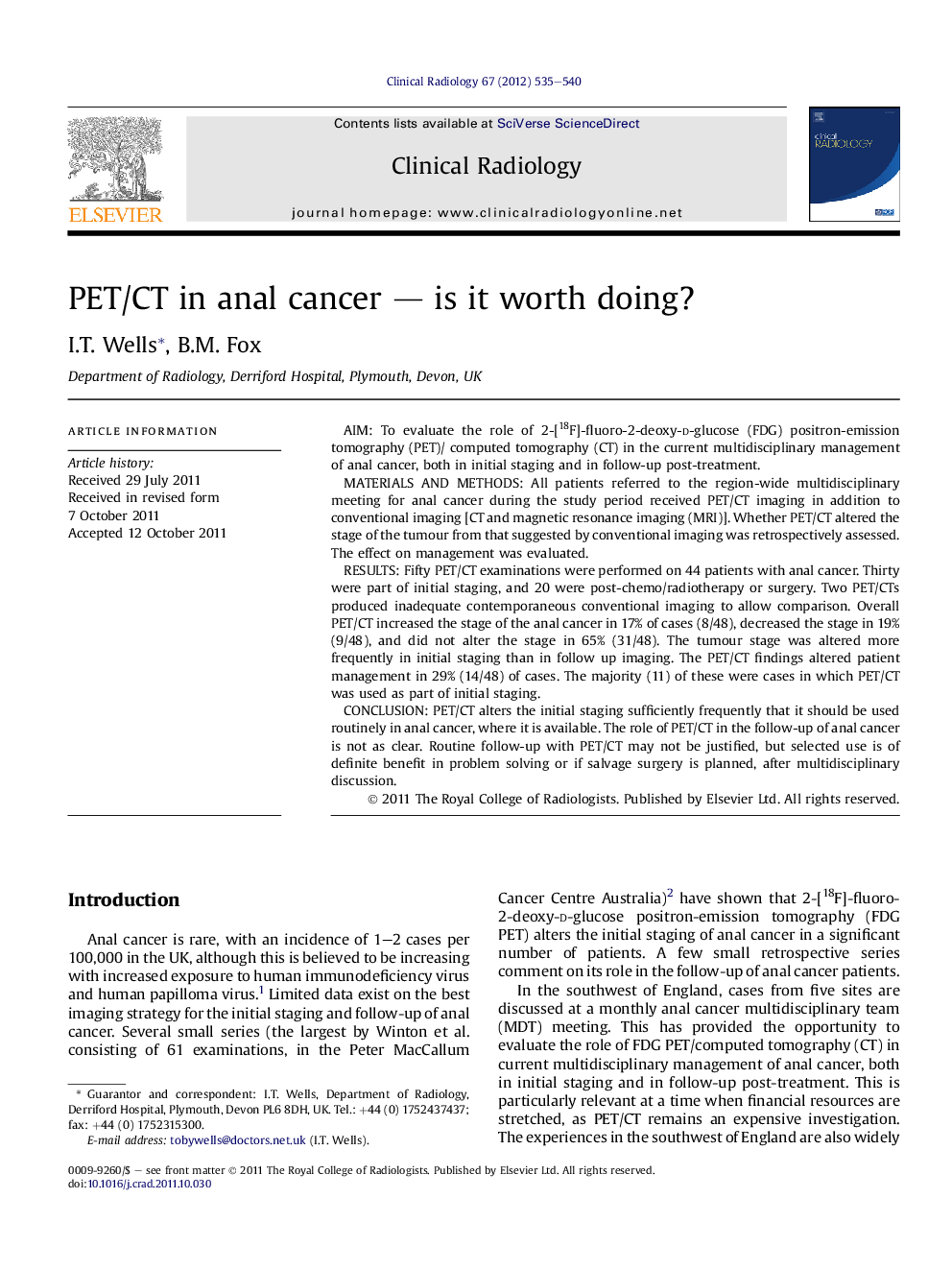| Article ID | Journal | Published Year | Pages | File Type |
|---|---|---|---|---|
| 3983331 | Clinical Radiology | 2012 | 6 Pages |
AimTo evaluate the role of 2-[18F]-fluoro-2-deoxy-d-glucose (FDG) positron-emission tomography (PET)/ computed tomography (CT) in the current multidisciplinary management of anal cancer, both in initial staging and in follow-up post-treatment.Materials and methodsAll patients referred to the region-wide multidisciplinary meeting for anal cancer during the study period received PET/CT imaging in addition to conventional imaging [CT and magnetic resonance imaging (MRI)]. Whether PET/CT altered the stage of the tumour from that suggested by conventional imaging was retrospectively assessed. The effect on management was evaluated.ResultsFifty PET/CT examinations were performed on 44 patients with anal cancer. Thirty were part of initial staging, and 20 were post-chemo/radiotherapy or surgery. Two PET/CTs produced inadequate contemporaneous conventional imaging to allow comparison. Overall PET/CT increased the stage of the anal cancer in 17% of cases (8/48), decreased the stage in 19% (9/48), and did not alter the stage in 65% (31/48). The tumour stage was altered more frequently in initial staging than in follow up imaging. The PET/CT findings altered patient management in 29% (14/48) of cases. The majority (11) of these were cases in which PET/CT was used as part of initial staging.ConclusionPET/CT alters the initial staging sufficiently frequently that it should be used routinely in anal cancer, where it is available. The role of PET/CT in the follow-up of anal cancer is not as clear. Routine follow-up with PET/CT may not be justified, but selected use is of definite benefit in problem solving or if salvage surgery is planned, after multidisciplinary discussion.
